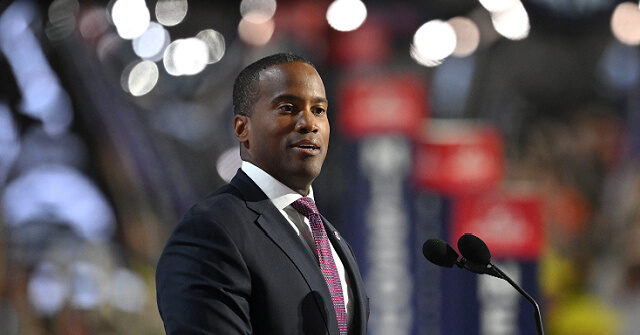The long road to recovery in the business travel sector just got shorter. There have been some encouraging signs that business travel is rebounding to pre-Covid spending levels sooner than anticipated, according to the Global Business Travel Association . Business travel was essentially shut down during the Covid-19 pandemic, with many predicting a slow slog to revive sales and a landscape that would be permanently changed. Now the organization is predicting global business travel spending will surpass its 2019 spending level of $1.4 trillion in 2024, compared to its earlier forecast of 2026. Spending is expected to grow to $1.8 trillion in 2027. The GBTA is crediting the resilience of the global economy as a key factor in the rebound. On top of that, corporate decision-makers are more optimistic about business trips than workers, which is a positive sign since they determine policy, a recent Morning Consult survey found. Some 28% of those who make the business travel decisions and 32% of those in charge of company travel budgets said their workplace will increase business travel in the coming year, Morning Consult found. That’s compared to 15% of all employed adults who said the same. After prior polls of workers pointed to a long recovery, the firm created a demographic of business travel decision-makers, including those who are responsible for budgets, for its latest survey. They were among the 2,435 employed U.S. adults polled Aug. 12-13, 2023. Lindsey Roeschke, travel and hospitality analyst at Morning Consult, said she was surprised by the results. “I thought we would see a higher level of negativity among the folks who are on the inside, like, ‘Yeah, you workers may think that you’re going to go somewhere, but I’m looking at the budgets, and it really doesn’t seem likely,”’ she said. “What we actually found was the exact opposite. … So I think that bodes well for the recovery going forward.” Who will benefit Business travelers far outspend leisure travelers on a per-head basis, so a recovery has huge implications for the travel industry, Roeschke said. That’s readily apparent for airlines, she noted. “There are going to be people who are coming back to that category, buying premium seats,” she said. Those travelers also tend to spend more on things such as amenities, checked baggage, food and drinks, she added. After meeting with senior executives in the airline industry, Deutsche Bank analyst Michael Linenberg said he was encouraged by commentary about corporate travel demand and believes revenue gains of 5% from September 2019 seem “very achievable.” “Although volumes are still down an estimated 10% (which would imply 15% better yields), a growing number of companies are requiring their employees to return to the office this fall which we believe will stimulate additional corporate travel,” he wrote in a Sept. 8 note. On top of that, there will be a return of corporate earnings growth, with S & P 500 earnings projected to be up 8% in the December quarter, he added. Business travel has historically accounted for about 20% to 25% of volume for the big airlines, but has shifted down one to three percentage points, Linenberg told CNBC. However, there are new segments that the industry hasn’t focused on before, such as the ability to travel while working remotely and the blending of business and leisure travel, he said. “Where the airlines may have seen a permanent reduction in the percentage of travel that is pure corporate, it has now been offset by some of these segments that didn’t really exist to the extent they exist today,” he said. Overall, Linenberg is bullish on American Airlines , Delta Air Lines and United Airlines for their healthy cash-flow generation, strong margins, earnings growth and diversified revenue streams. He sees the recent pullback as an opportunity to buy . American Airlines and Delta both recently cut forecasts for the third quarter after higher costs hit profits. Meanwhile, the hotel industry has seen about 10% of business travel eaten away by online meetings and has been affected by layoffs at big tech and financial firms, said Truist analyst Patrick Scholes. However, the firm’s data checks on U.S. hotels show a strong space of corporate group bookings, as well as moderate acceleration of small and midsize business travel growth, he said. This is also the time of year when group travel becomes a larger part of the revenue mix, he added. In this environment, Scholes likes real estate investment trust Ryman Hospitality Properties , which owns several large convention hotels as well as The Grand Ole Opry. The company gets about 80% of its business from groups and conventions, he said. There is also minimal new competition as developers shied away from building group hotels, he added. RHP YTD mountain Ryman Hospitality Properties year to date Another name on his list is Hyatt Hotels , which gets about 30% of its business from group and convention consumers, Scholes said. “For the next six to nine months, group is the number one driver of RevPAR growth, and those two companies … are the best positioned for that,” he said, referring to the key hotel metric revenue per available room. Of course, the recovery in business travel can also shift if there are changes in the economic environment. “A lot of this is going to hinge on how the economy continues to play out,” Morning Consult’s Roeschke said. — CNBC’s Michael Bloom contributed reporting.
Saturday, April 12, 2025
Business travel spending is recovering quickly. Here’s who benefits
Subscribe To Our Newsletters
Customer Support

1251 Wilcrest Drive
Houston, Texas
77042 USA
Call-832.795.1420
e-mail – news@theinsightpost.com
Subscribe To Our Newsletters
Categories
- Africa
- Africa-East
- African Sports
- American Sports
- Arts
- Asia
- Australia
- Business
- Business Asia
- Business- Africa
- Canada
- Defense
- Education
- Egypt
- Energy
- Entertainment
- Europe
- European Soccer
- Finance
- Germany
- Ghana
- Health
- Insight
- International
- Investing
- Japan
- Latest Headlines
- Life & Living
- Markets
- Mobile
- Movies
- New Zealand
- Nigeria
- Politics
- Scholarships
- Science
- South Africa
- South America
- Sports
- Tech
- Travel
- Travel-Africa
- UK
- USA
- Weather
- World
No Result
View All Result
Recent News
Theinsightpost ©2024 | All Rights Reserved. Theinsightpost is an Elnegy LLC company, registered in Texas, USA



















Discussion about this post